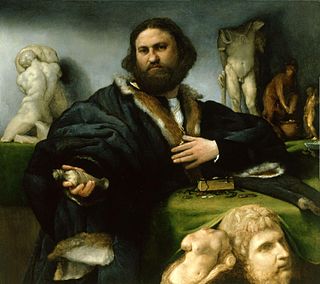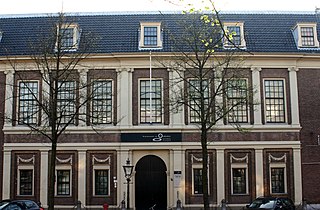
Leiden University, founded in the city of Leiden, is the oldest university in the Netherlands. The university was founded in 1575 by William, Prince of Orange, leader of the Dutch Revolt in the Eighty Years' War. The Dutch Royal Family and Leiden University have a close association: Queen Juliana, Queen Beatrix and King Willem-Alexander are former students. The university came into particular prominence during the Dutch Golden Age, when scholars from around Europe were attracted to the Dutch Republic due to its climate of intellectual tolerance and Leiden's international reputation. During this time Leiden was home to such figures as René Descartes, Rembrandt, Christiaan Huygens, Hugo Grotius, Baruch Spinoza and Baron d'Holbach.

Carl Peter Thunberg, also known as Karl Peter von Thunberg, Carl Pehr Thunberg, or Carl Per Thunberg, was a Swedish naturalist and an apostle of Carl Linnaeus. He has been called "the father of South African botany", "pioneer of Occidental Medicine in Japan" and the "Japanese Linnaeus".
Archaeology is the study of human activity in the past, primarily through the recovery and analysis of the material culture and environmental data that they have left behind, which includes artifacts, architecture, biofacts and cultural landscapes.

Peter Oluf Brøndsted, Danish archaeologist and traveller.

Henry Salt was an English artist, traveller, collector of antiquities, diplomat, and Egyptologist.
The decade of the 1740s in archaeology involved some significant events.
The decade of the 1790s in archaeology involved some significant events.

Gerrit Reynst was, like his younger brother Jan (1601–1646), a Dutch merchant and art collector from Amsterdam, with his brother owner of the Reynst Collection. He was an alderman and member of the town council, entering it in 1646.

The Dutch Gift of 1660 was a collection of 28 mostly Italian Renaissance paintings and 12 classical sculptures, along with a yacht, the Mary, and furniture, which was presented to King Charles II of England by the States-General of the Netherlands in 1660. The collection was given to Charles II to mark his return to power in the English Restoration, before which Charles had spent many years in exile in Paris, Cologne, and the Spanish Netherlands, during the rule of the English Commonwealth. It was intended to strengthen diplomatic relations between England and the Republic, but only a few years after the gift the two nations would be at war again in the Second Anglo-Dutch War of 1665–67.

The Reynst Collection, probably the most extensive Dutch 17th century collection of art and artefacts, was owned by the Dutch merchants Gerrit Reynst and Jan Reynst. The collection was put on display in their house at the sign of Hope on the Keizersgracht in Amsterdam. It consisted of over 200 Italian paintings and over 300 sculptures, most of them ancient Roman. There were other antiquities: ten sepulchral monuments, five votive reliefs, nine cinerary urns, "Etruscan" vases, and Christian objects, as well as engraved gems. The collection was dispersed in the 1660s and 1670s, after both brothers had died, and Gerrit's widow sold parts to various buyers.
The Smetius Collection was a 17th-century collection of Roman provincial antiquities around the Dutch city of Nijmegen. Put together by Johannes Smetius (1591–1651) and his son Johannes Smetius junior (1636–1704), both clergy at Nijmegen, the collection was instrumental in settling the debate about the exact location of the Batavians.

Frederic Count de Thoms (1669–1746) was a German art collector with various influential political ties. He was born in Giessen. He wrote a biography of Louis XIV of France in 1715, and became secretary to King George I of Great Britain in 1719. During his stay in Italy he received the title of count. In 1741 he settled down in Leiden and married Joanna Maria Boerhaave, daughter of the famous Dutch physician Herman Boerhaave. Part of his art collection is still on display in the Dutch National Museum of Antiquities and in the Geldmuseum in Utrecht. An anonymous portrait is kept by the Lakenhal museum in Leiden.

The Papenbroek Collection is one of the largest 18th-century Dutch art collections. After the death of its owner, Gerard van Papenbroek (1673–1743), the antiquities were bequeathed to Leiden University. These antiquities would become the earliest collection of the Dutch National Museum of Antiquities, and have been called a "decisive factor for the creation of the first academic chair of archaeology". The portraits and manuscripts were divided between Leiden University and the Athenaeum Illustre of Amsterdam.

Jean Emile Humbert was a Dutch lieutenant-colonel who can be credited with rediscovering ancient Carthage. As an agent for the Dutch government he procured vital parts of the collection of the National Museum of Antiquities in Leiden. Humbert was awarded the Order of the Netherlands Lion for his archaeological work.

The Top of the Mont Blanc is an appropriately named collection piece on display in the Oval Room of Teylers Museum. The specimen was supposedly cut off from the highest findable piece of exposed rock of the Rocher de la Tournette high on the snow covered summit ridge of the Mont Blanc on 3 August 1787, during one of the first climbs of the mountain by the Swiss scientific pioneer Horace-Bénédict de Saussure.

Conradus Leemans was a Dutch Egyptologist.

Justus Hiddes Halbertsma, West Frisian form: Joast Hiddes Halbertsma, pron. [jo.ǝst ˈhɪdəs ˈhɔlbǝtsma] ; Dutch form: Joost Hiddes Halbertsma, pron. [joːst ˈhɪdəs ˈhalbǝrtsma], was a Dutch Frisian writer, poet, minister, lexicographer and linguist. Today, he is primarily known for the poetry and short story collection De Lapekoer fan Gabe Skroar, which he wrote with his brother Eeltsje, publishing the first edition in 1822. Afterwards, this work was continually expanded, and also came to include contributions by a third brother, Tsjalling, until all the Halbertsma Brothers' prose and poetry was posthumously collected in 1871 to become the famous work Rimen en Teltsjes. Although the literary value of this collection was later disputed by some critcs, it is undeniable that Rimen en Teltsjes played a role of crucial importance in the development of a new literary tradition after Western Frisian had been used almost exclusively as a spoken language for three centuries.

The Brothers Halbertsma were three brothers born in the Frisian village of Grou towards the end of the 18th century, who played a role of crucial importance for the development of a written literature in the Western Frisian language. These three brothers were:

















